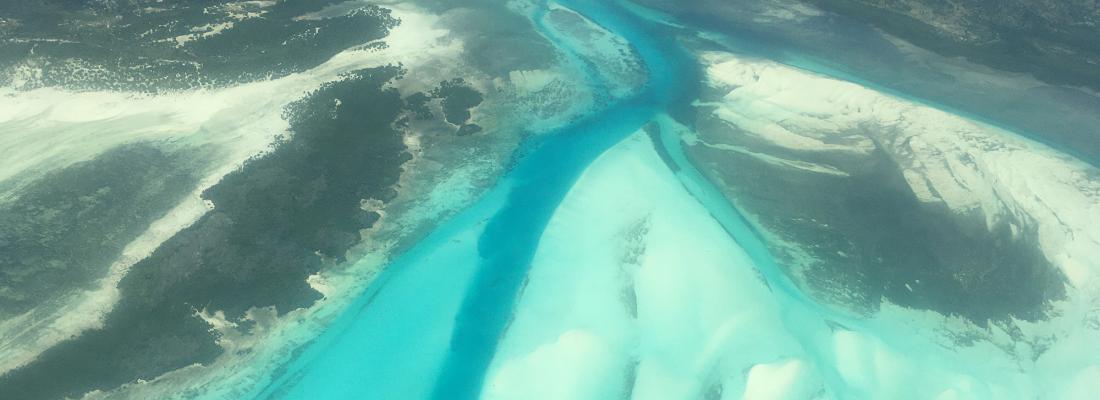Biodiversity Reading time 3 min
Tanzania: how marine protected areas are transforming the local economy over the long term
Published on 04 October 2024

Marine biodiversity, subject to constant degradation, is essential to the proper functioning of the oceans and their capacity to regenerate. This degradation has direct repercussions on the ecosystem services on which human populations depend, making it imperative to adopt sustainable policies that benefit both man and nature. Among these policies, multiuse marine protected areas (MPAs) are increasingly being encouraged. These areas allow certain economic activities, notably fishing, while imposing stronger regulations than those in force outside the MPAs.
However, the effect of MPAs on ecosystems, fish biomass and societies remains uncertain, debated and under-studied, particularly over the long term. Fears of restrictions on activities, especially fishing, often hinder the creation of these protected areas, despite the absence of solid evidence of negative effects on the local economy. Existing studies, usually very local and based on short time series, offer only a fragmentary view of the real impact of MPAs. The effect of MPAs in low- and middle-income countries such as Tanzania is of particular interest because of the major stakes involved in the compromises between conservation objectives and the imperatives of economic development, often perceived as contradictory.
Marine protected areas in Tanzania: a tool against the collapse of marine biodiversity
The coasts of the western Indian Ocean, particularly those of Tanzania, are a good illustration of the challenges facing the management of marine resources. These ecosystems are under increasing pressure from overfishing and climate change, among other factors. Since the 1980s, fish stocks have declined drastically due to overfishing by local and international fishing fleets, affecting the 4.2 million Tanzanians who depend on fishing for their livelihood. In response to this crisis, marine conservation initiatives emerged as early as the 1970s, then expanded in the 1990s. These initiatives include the creation of MPAs, which now integrate socio-economic activities such as beekeeping, agriculture and aquaculture, alongside conservation efforts.
Unprecedented data to study the long-term effects of MPAs
An interdisciplinary group of international researchers, bringing together marine ecologists, geographers, fisheries specialists and economists, recently published a study using highly detailed economic data to investigate the long-term effects of MPAs. This research follows on from a study carried out in 2003 by Tobey and Torell, which revealed a very limited effect of MPAs in Tanzania 3 to 8 years after their creation. Two decades later, the researchers re-examined the initial data, and reproduced the survey protocol in 24 villages located on the Tanzanian coast, at varying distances from the MPAs. In each village, around thirty households were interviewed to characterise and assess their economic activities and living standards. Using counterfactual impact evaluation (diff-in-diff, or Before-After Control-Impact, BACI), this new study adds to the existing literature by analysing longer-term effects than those usually documented, and enables robust conclusions to be drawn.
MPAs: a lever for economic prosperity, but challenges for biodiversity persist
The living standards of people in villages close to or within the MPAs have risen by 50% compared with those further away.
The results of the study show a significant improvement in the living standards of communities near MPAs, with an increase of 50% compared with villages further away. These economic advantages benefit all residents, rich and poor alike. Interestingly, this rise is not directly linked to an increase in fish catches, but rather to a diversification of economic activities, particularly towards jobs in the secondary and tertiary sectors, such as tourism. These findings call into question the assumption that the economic prosperity of local communities depends on flourishing marine biodiversity. In reality, MPAs generate economic benefits even in the absence of significant gains in fish biomass. In particular, nature-based tourism, which is often encouraged by the creation of MPAs, is an important economic lever, contributing to improved living standards in developing coastal countries such as Tanzania.
However, the sustainability of these benefits remains uncertain. Continued degradation of marine ecosystems could ultimately harm the entire tourism sector, with negative knock-on effects on the local economy. To avoid this scenario, it is crucial to strengthen the protection of ecosystems within MPAs.
MPAs stimulate the economy despite limited gains in fish biomass, but their sustainability depends on greater protection of biodiversity.
Investing in preserving biodiversity could therefore prove to be an economically sound decision. The additional costs associated with stronger protection of flora and fauna are likely to be minimal compared with the long-term economic benefits that healthy marine ecosystems could generate. By filling financial gaps and strengthening enforcement, MPAs could play a central role in creating a sustainable and prosperous economy.
REFERENCE
Desbureaux S., Girard J., Dalongeville A., Devillers R., Mouillot D., Jiddawi N., Sanchez L., Velez L., Mathon L., Leblois A. (2024). The long-term impacts of Marine Protected Areas on fish catch and socioeconomic development in Tanzania. Conservation Letters 2024;e13048
